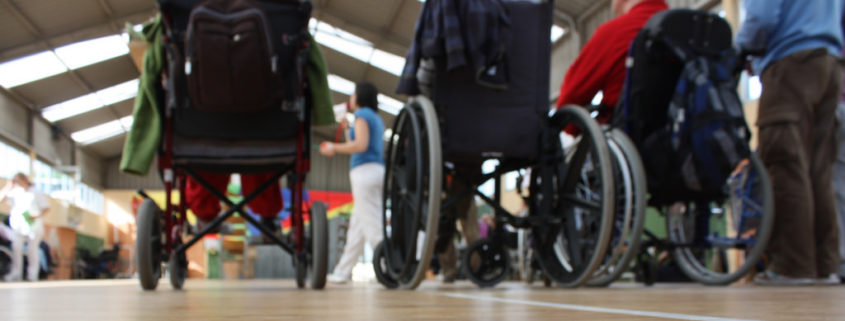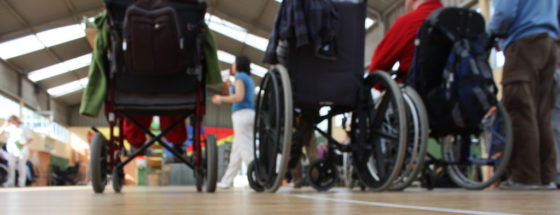Spastic Cerebral Palsy: What You Need to Know
Last updated Nov. 6, 2017.
When you welcome a little one to the world, you want the very best for them. Occasionally, baby can become injured and/or develop any number of conditions or disorders, including cerebral palsy. Spastic cerebral palsy is one type of cerebral palsy, and it’s characterized by increased muscle tone, muscle stiffness, and in some, unusual movements.
According to the Centers for Disease Control and Prevention (CDC), each year in the United States, approximately 11,500 people are diagnosed with cerebral palsy (CP) and of those, 80% are the subtype spastic cerebral palsy.
A 2002 study published in Developmental Medicine and Child Neurology shows the incidence of spastic CP in the U.S. was reported to be fairly stable at 1.76 in every 1,000 live births. There is a wide spectrum of disability, however, ranging from a slightly awkward gait or hand stiffness to severe disability and complete dependence throughout one’s lifespan. While the underlying brain disorder is not progressive, baby’s disability may worsen as she gets older.
Contents
Early Childhood Signs
Because spastic cerebral palsy varies in cause, type, and severity, children present with a wide range of symptoms, usually before the age of 3. Parents may notice a delay or abnormality in achieving motor milestones like suckling, smiling, reaching, feeding, rolling, crawling, sitting, standing, and walking. They also may notice that baby is floppy (early on), stiff, or awkward to hold.
Abnormal movements or twitching also can may be observed in a child who has CP. Asymmetry is particularly significant.
Tell your child’s healthcare provider if you are concerned about any of these signs. It is important to know that there are other causes for such developmental delays.
Subtypes and Symptoms of Spastic Cerebral Palsy
The National Institute for Neurological Disorders describes three main subtypes of spastic CP.
Spastic diplegia/diparesis
Mainly affects the legs, with little or no involvement of the arms and face. Tendon reflexes are exaggerated. The walking gait is often affected, resulting in walking on tiptoes or scissoring (knees pulled inward). Some go on to develop abnormal hip sockets and dislocation. Children often have normal language and intelligence.
Spastic hemiplegia/hemiparesis
Affects one side of the body, most commonly the arm, hand, and trunk, and sometimes the leg. The affected limb is often shorter, the baby’s hand may form a tight fist. Some develop scoliosis (curvature of the spine). Seizures and speech delay are common, but intelligence is often normal here as well.
Spastic quadriplegia/quadriparesis
All four limbs are affected by spasticity, but the neck may be weak or floppy. It is usually the result of more extensive brain damage or abnormality and often accompanied by significant physical and intellectual disability. Most children are unable to walk and speech is delayed and abnormal. This type is frequently associated with seizures, which are difficult to treat.
Muscles affected by spasticity are hypertonic (increased tone and stiffness) and continuously contract and pull against their opposing muscles. This in turn causes abnormal positioning of joints, which can lead to physical deformity. The opposing muscles become overstretched and weak, and function is reduced. Spasticity of affected muscles may increase when they are stretched, and with emotional arousal such as anxiety, fear, excitement, or pain.
As with other forms of cerebral palsy, some children may experience comorbid (associated) symptoms, including:
- Neurodevelopmental and intellectual or learning disability.
- Visual, hearing, and speech disorders.
- Eating difficulties.
- Seizures.
- Respiratory problems due to weak chest muscles and aspiration of fluids or solids.
- Bone, spinal, and joint deformities may arise in later life including scoliosis and contractures (shortening and hardening of muscles).
See also: Ataxic Cerebral Palsy: What You Need to Know
Causes of Spastic CP
Spastic cerebral palsy is caused by damage or abnormality of the brain’s motor cortex (the area that creates signals to initiate baby’s movement) and pyramidal tracts (which transmit signals from the cortex to the spinal cord, on to the muscles). In spastic CP, nerve signals to the voluntary muscles of the body are affected.
Up to 90% of CP is congenital, which means it occurs before or during birth. Between 10% and 15% are acquired, occurring after birth — usually in the first 28 days. It was once thought that most cases were due to low oxygen during birth (intrapartum asphyxia), but a 1998 study showed that this was the cause in only 8% of all the children with spastic cerebral palsy.
For many individuals, no definitive cause is found; for some, the cause is multifactorial (multiple causes).
Risk factors for congenital CP include:
- Placental problems
- Genetic abnormalities
- Brain malformations
- Low birth weight
- Prematurity
- Multiple pregnancy
- Assisted reproduction
- Maternal exposure to infection, toxins, or physical trauma
- Rhesus incompatibility
- Medical problems in the mother
- Birth complications (such as breech delivery, placental detachment, uterine rupture, and umbilical cord problems)
Acquired CP, meanwhile, can be caused by jaundice, infection (like meningitis), head injury (motor vehicle accident, child abuse, or a fall), or stroke.
See also: Fetal Stroke and Neonatal Stroke: What You Need to Know
Treatments for Spastic CP
There is currently no cure for spastic CP, but early diagnosis, treatment, and support can significantly improve baby’s outcome and decrease disability. While the underlying abnormality in the brain is static, symptoms and disability may change with time.
Treatment should be designed to the specific needs of the individual. A 2014 study by Alireza Shamsoddini provides a comprehensive review of treatment options, detailed below.
Physical Therapy
Physical therapy can improve strength, balance, coordination, mobility, and help stretch spastic muscles. It’s useful for gross motor skills (large movements). Orthotics, splints, and braces may be prescribed.
Occupational Therapy
Occupational therapy helps with posture, upper body control, and fine motor skills, and is excellent for improving functional skills such as eating, self-care, use of a pencil or pen, and other activities of daily living. Assistive devices such as computers and voice synthesizers may help further assure the child can communicate his or her needs, hold a conversation, and develop social skills without frustration.
See also: Can Video Games Help Children with Cerebral Palsy?
Other Therapies
More common therapies include any benefit from play and recreation therapy, speech therapy, and feeding therapies. Oral muscle relaxants such as baclofen and diazepam may help reduce the spasticity temporarily.
Less common therapies include surgery, which may help to reduce stiffness and joint abnormalities. Injections such as botulinum toxin may be used to reduce spasticity, as well. Exciting research is being done into stem cell therapy for CP, which could heal damaged areas of the brain and improve function.
No matter the type of cerebral palsy, help in school is essential. Many children with CP qualify for early intervention and school services through the Individuals with Disabilities Act.
Get Help if Your Child’s Cerebral Palsy was Caused by a Birth Injury
Although some cases of cerebral palsy are genetic, others may be the result of birth trauma. Baby’s brain can be damaged during labor — for instance in cases of difficult births, doctors may not perform a C-section in time and baby can become injured in the birth canal. Tools such as vacuum extraction or forceps delivery can lead to brain damage or nerve damage.
If your baby’s cerebral palsy was caused by the negligence of your medical team, you may have a legal claim. Cerebral palsy involves lifelong treatment that adds up — and you shouldn’t have to pay for it.
We may be able to help. Contact Safe Birth Project today for a free consultation.
Image Credit and License









Leave a Reply
Want to join the discussion?Feel free to contribute!